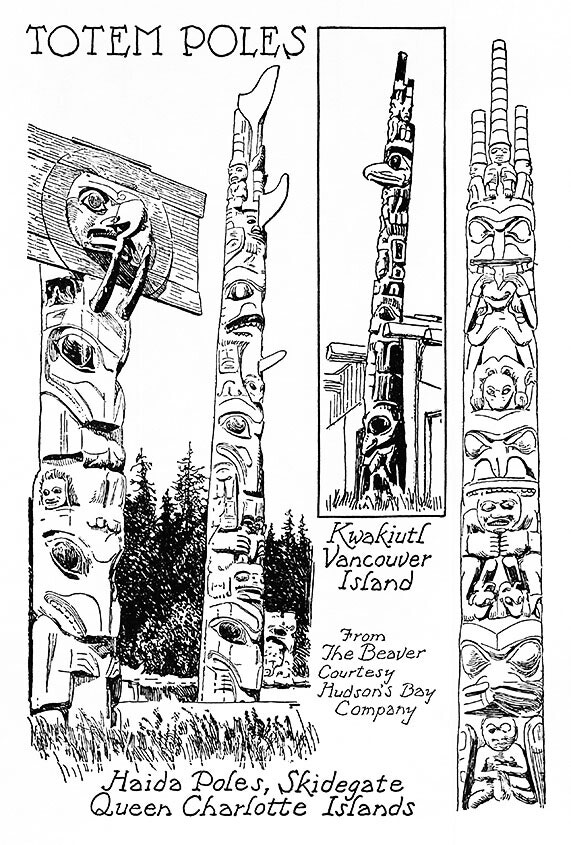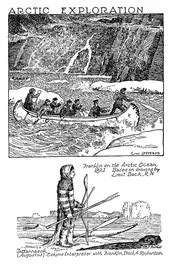Totem Poles
Library and Archives Canada, Acc. No. 1972-26-830
Remarks
C.W. Jefferys' notes about this picture from The Picture Gallery of Canadian History Volume 2
Totem poles are found on the North Pacific Coast, among the Haida, the Tsimsyan and the Kwakiutl tribes. They are of two types-house poles and memorial poles. House poles were heraldic signs, symbolizing family ancestry and tribal myths and traditions. They were erected in front of the houses, the entrance to which was sometimes through them. Memorial poles, in use particularly among the Tsimsyan, commemorated deceased members of the family, and were erected at some distance from the house.
These tall open-air poles were of later date than the carved interior posts described by the early explorers, Cook and Meares, and depicted by Webber, as shown in previous pages in this volume. None of the early views show poles outside the houses. The exterior poles were generally more delicately and elaborately carved. This was made possible by metal tools obtained from white traders.
Dr. Marius Barbeau has made an intensive study of these poles, and his numerous articles and monographs give the most complete and authoritative information on the subject. See also articles in The Beaver for June, 1940, and September, 1942, which contain many illustrations, some of which have been copied in this volume.
Published References
- Jefferys, Charles W. 1945 The Picture Gallery of Canadian History Volume 2, p.234




Comments